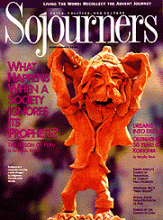A Bush administration plan that would have quietly opened national forests to strip mining - scheduled to become final shortly after election day - was thwarted in October when environmentalists succeeded in bringing the plan to public attention.
A draft of the Interior Department regulation was printed in The Federal Register in July 1991, but the plan received scant public notice until late September, when The New York Times -swayed by the National Wildlife Federation (NWF) and other environmental groups - published a front-page article on the proposal. The furor raised in the wake of the Times article helped persuade Congress to impose a yearlong moratorium on the plan, which was seen by many as a bonanza for the coal industry.
In 1977, Congress passed legislation protecting public lands from strip mining, with an exception for companies that held a "valid existing right" to the coal prior to the law's passage - the definition of which has been battled in court ever since. The new Interior regulation - which would have opened up to mining as much as 40 million acres of parks, preserves, and protected lands - granted mineral rights to anyone who had made a "good faith" effort to obtain a permit prior to the 1977 law's passage. The government would have had to pay those companies to relinquish their rights to the coal.
Read the Full Article

